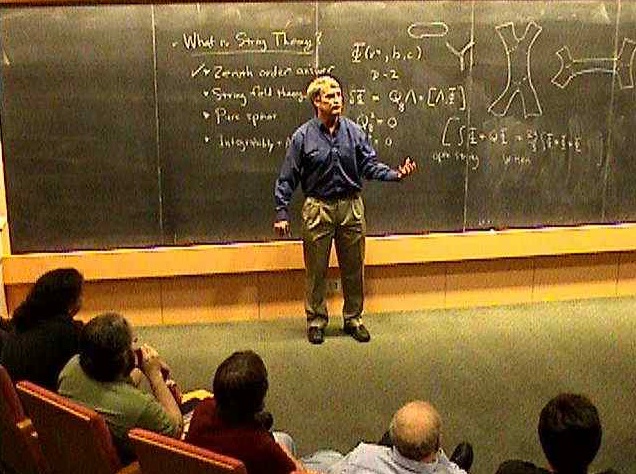More Scenes From the Storm in a Teacup, VII
You can catch up on some of the earlier Scenes by looking at the posts listed at the end of this one. Through the course of doing those posts I’ve tried hard to summarize my views on the debate about the views of Smolin and Woit – especially hard to emphasize how the central point of their debate that is worth some actual discussion actually has nothing to do string theory at all. Basically, the whole business of singling out string theory as some sort of great evil is rather silly. If the debate is about anything (and it largely isn’t) it is about the process of doing scientific research (in any field), and the structure of academic careers in general. For the former matter, Smolin and Woit seem to have become frustrated with the standard channels through which detailed scientific debates are carried out and resolved, resorting to writing popular level books that put their rather distorted views on the issues into the public domain in a manner that serves only to muddle. On the latter, there is a constant claim that string theory and its proponents are somehow brainwashing and/or frogmarching young people into working on that area to the exclusion of all else. The authors seem oblivious to some simple facts to the contrary there: (1) that you simply can’t do that to genuinely smart, creative young people; (2) that even students who have string theorists as their Ph.D or postdoc advisors often work on non-string theory research topics (3) that they’re doing an excellent job of either driving young people away from working on some of their favourite alternatives – or from pursuing theoretical physics altogether – by failing to clearly explain their merits and by using the press to help turn this into a distorted spectacle.
I’ve summarized a lot of what I think in the latter part of this post.
There are two major problems with how live debates take place in the public sphere. One is that the average person listening to the debate cannot know whether much of what Smolin and Woit claim as facts are right or wrong (or anyone on the other side of the debate, for that matter). When someone disputes a […] Click to continue reading this post

 Gosh, a thoughtfully-written general level (more or less) article on some of the general outcomes of string theory research! It’s written by Matthew Chalmers, and is in the Sept. ’07 edition of Physics World*. The article can be read online here, and downloadable pdf is here. The graphic on the right came with the article. I don’t fully understand what it is, but the title, like that of the article, is “stringscape”… Look, let’s not over-think this cvj – it’s a pretty decoration.
Gosh, a thoughtfully-written general level (more or less) article on some of the general outcomes of string theory research! It’s written by Matthew Chalmers, and is in the Sept. ’07 edition of Physics World*. The article can be read online here, and downloadable pdf is here. The graphic on the right came with the article. I don’t fully understand what it is, but the title, like that of the article, is “stringscape”… Look, let’s not over-think this cvj – it’s a pretty decoration.


